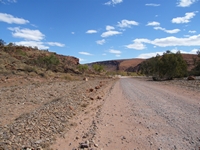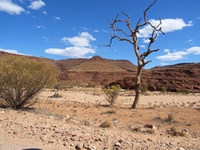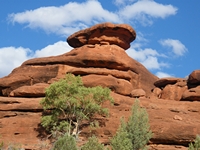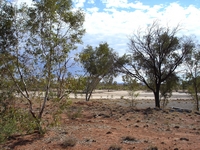Australia So Much to See


Circles in the sandstone floor of the valley are moisture pipes, where moisture siphons to the surface.
The walk trail continued through the shady creek bed with palms and trees to where the gorge widened and there were only a few more
palms.
Eggs, which can lie dormant for up to 27 years hatch within a few days when rain creates pools of water. Microscopic larvae
develop into adults within a few weeks. These larvae go through a series of moults and within 24 hours resemble adults. In seven to ten days from hatching, a female can produce eggs. Their occurrence is widespread, both through the arid and semi
arid areas of
In some of these pools, we found Shield Shrimps. Recognised as the oldest living species on earth, these tiny Shield Shrimps looks
like a bizarre combination of different creatures. They have a hard shield that covers the head and thorax of the animal, and
an abdomen which extends like a tail, with two long whip-like tails coming from it. On the under side, these shrimps have a
mass of feathery legs.
We took the full Mpulungkinya walk up the valley where most of the palms grow. A shorter walk can be taken, leaving the valley
sooner and looping back across the top of the gorge to the car park and the tour coach guides took their passengers on this shorter
option.
Being a true palm, they have netting which when dropped onto the rocks looks like a huge moth.
This unique species of red cabbage palms Livistona mariae subsp. Mariae is restricted to a small portion of the
At the entrance to the National Park, an electrified crossing has been set up to prevent horses and other feral animals from entering
the park. The electric wires were held just off the road with springs.
Central Australia 2008. Unique red cabbage palms at beautiful Palm Valley and visit the area where artist Albert Namatjira lived and painted.
Walking into the valley we found many small shallow pools as it has rained a week or two earlier.
The track then followed Palm Creek for short way into the Palm Valley Campground.
Next morning we drove four kilometres to the
Some wise people left their vehicle near the
Towards evening, the sky became overcast. From the pleasant camp ground alongside the creek, we watched the setting sun.
Although the
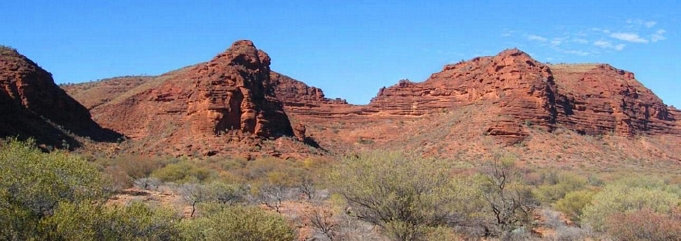


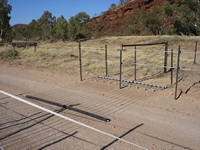
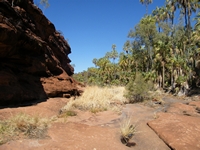
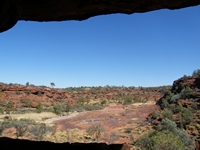
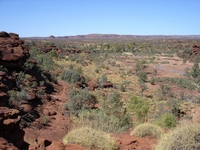
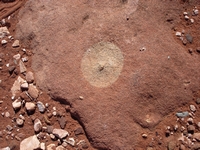
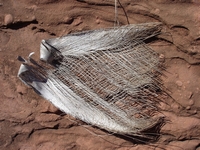
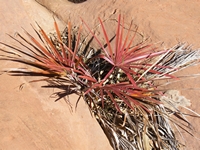
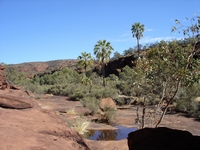
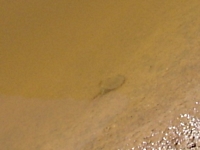
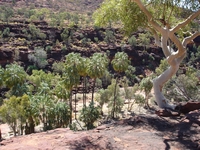
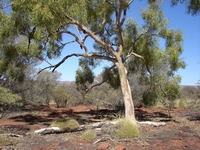
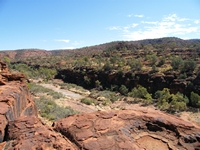
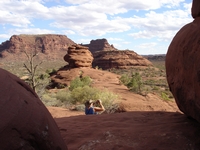
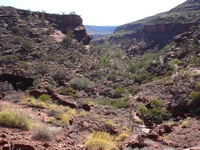
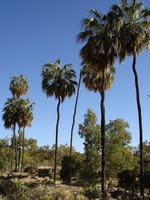
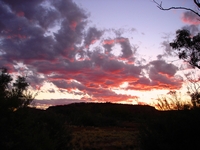
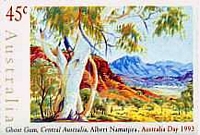
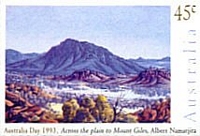
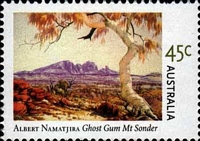
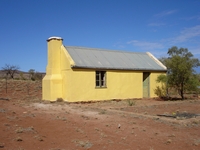
The trail took us up to the top of the ridge, and part way up, we rested in the shade of an overhanging rock while looking left to
the last few palms and right to the valley we had walked through. Pools of water were even remaining on the higher rock platform.
Coming back to the edge of the gorge, a tree clung to the cliff top, looking down over the palms. Cycads can be seen on the
shady far wall of the gorge.
The ridge top return walk took us through mulga scrub and woodland areas with occasional ghost gums, including this tree which has
balanced itself on the hard rock with roots running along the surface. A cooler alternative would have been to return to the
valley after climbing to the lookout point and retract the pleasant
When we reached to top of the ridge, the view of end of the gorge, the last of the palms along Palm Creek and the distant hills became
clearer.
Late in the afternoon we went a short way back along the access track to take the Kalarranga lookout walk. This short walking
trail goes to a wind carved rock balanced on a platform, with views of the valley.
After a warm night we started the Mpaara walk early in the day. The first part of the trail roughly follows the road as far
as the old ranger station near the
Not far past here and on the edge of the river bed is Palm Bend. Although not the first Glen of Palms discovered by Giles, this
one guided him into
Some of these palms are very tall, and they have survived the ravages of floods.
Coming around the hill, the view into the ‘amphitheatre’, where the sandstone shapes surround the plains. The walk trail descends
into the plains and returns to the car park.
Ranger talks are given weekly on different evenings at different parks during the tourist season. We stayed an extra night at
After quite a climb, we looked back up the
After leaving
Albert Namatjira was born on 28th July 1902 near Ntaria (Hermannsburg Mission). Albert attended the Hermannsburg mission school.
Visiting artist Rex Battarbee first taught him the technique of watercolour painting and Albert became the first Aboriginal artist
to paint and exhibit professionally in a Western style. He painted mostly landscapes of the local scenery, producing almost two thousand
pictures and founding a school of painting. Namatjira’s first solo exhibition was held in
The house is a two-roomed cottage constructed of hand cut local sandstone bricks which have been rendered in a similar style to the
buildings at the Hermannsburg Mission, with a corrugated iron roof. Albert and his family only lived in this house for five
years at which time the death of a child saw them move out for cultural reasons.
From the campground the hill, overlooking the Kalarranga sandstone carved rocks and around which we took the Mpaara walk, glowed in
the last rays of light of day.
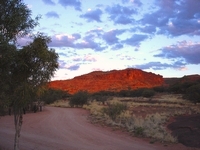
Lovely Mount Sonder in the purple of the distance is framed by a ghost gum in Albert Namatjira’s painting featured on a postage
stamp.
